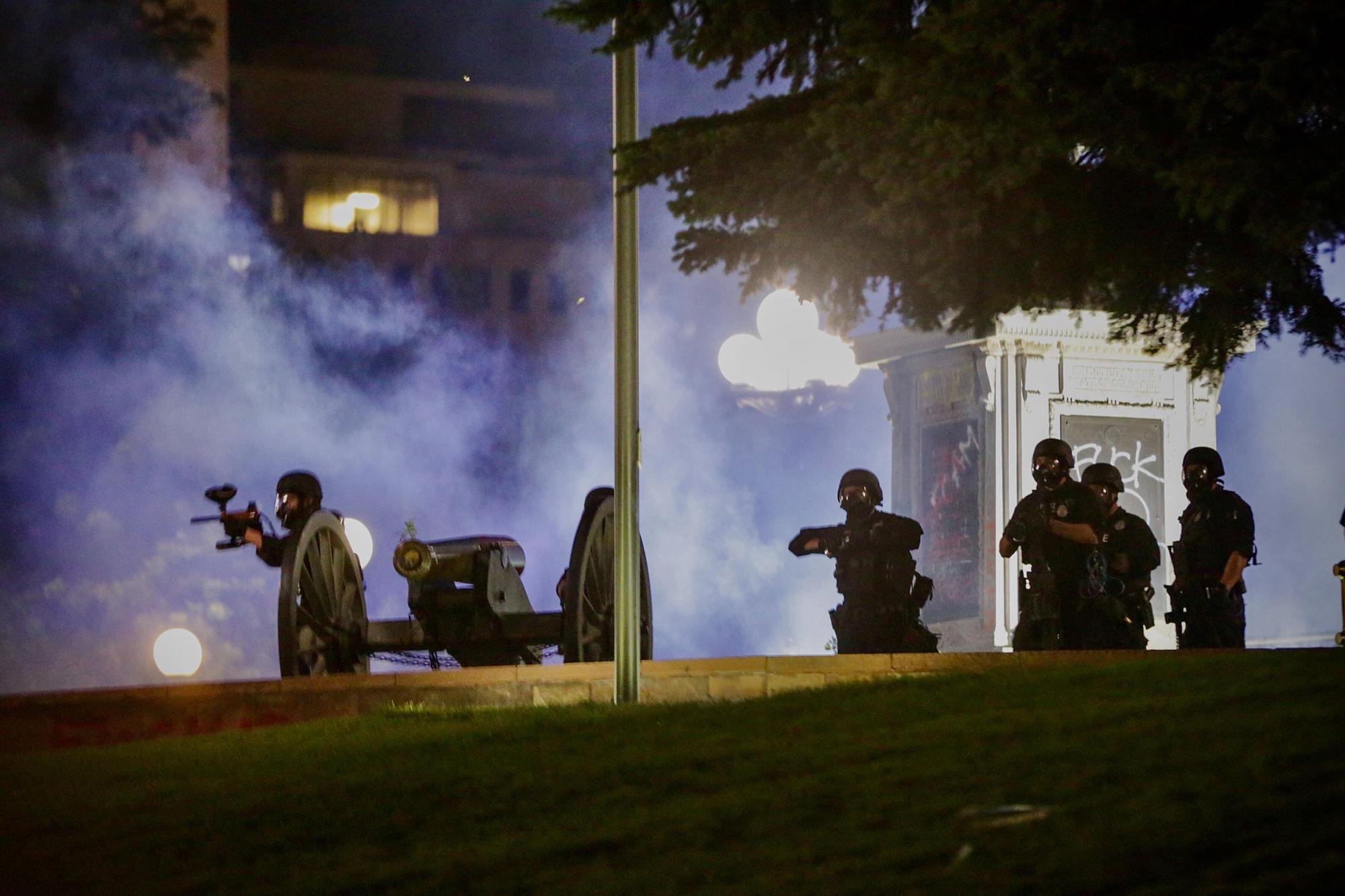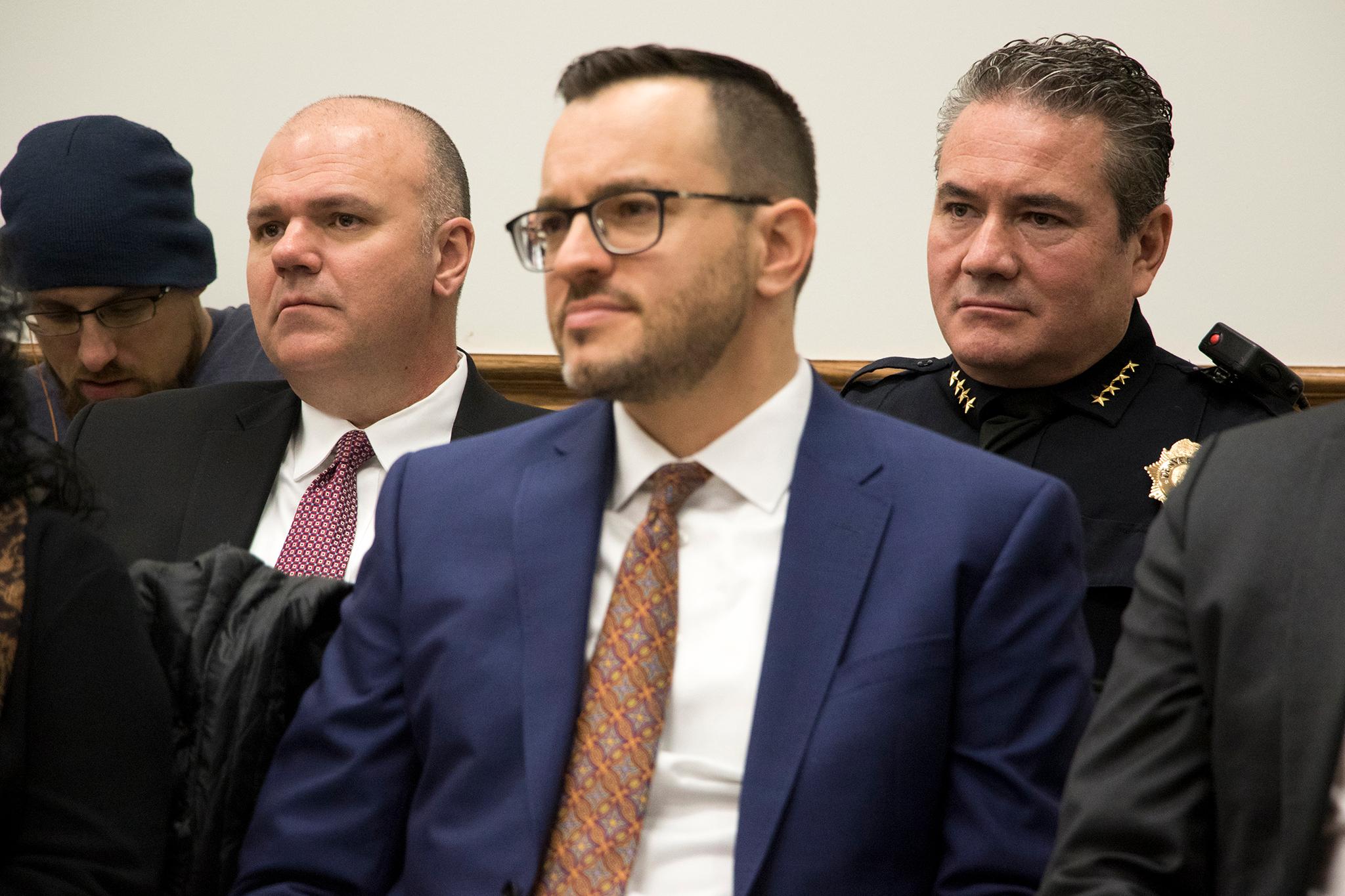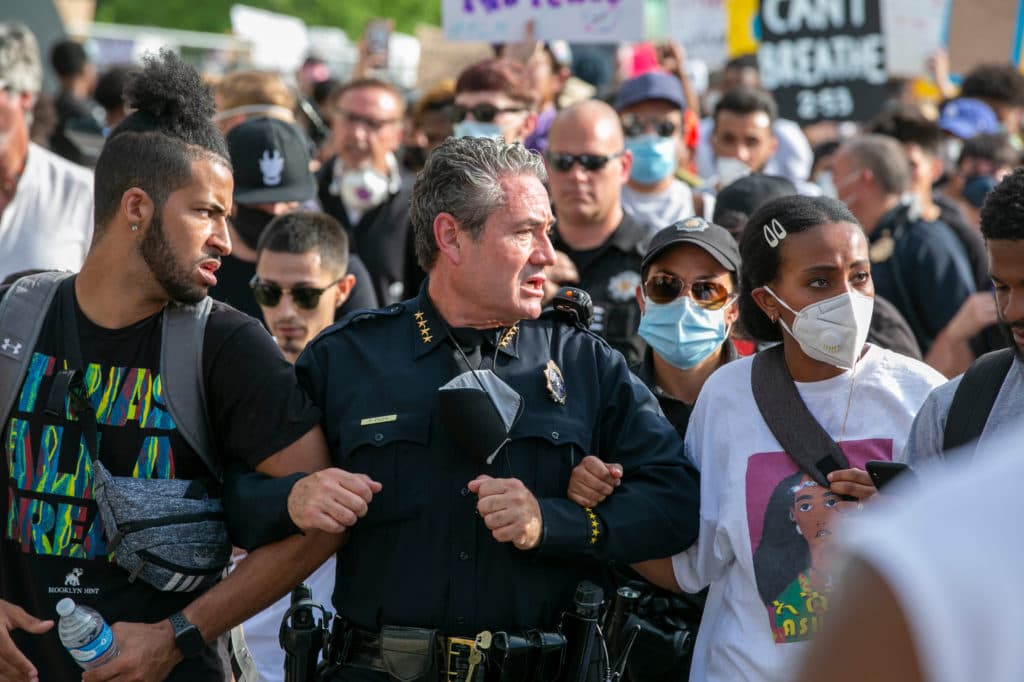The Denver Police Department mishandled its response to protests against racism and police brutality this summer, at times violating its own policies and endangering people while leaving a scant paper trail, according to a report released Tuesday by the Office of the Independent Monitor.
According to Independent Monitor Nick Mitchell, whose office watchdogs the city's police and sheriff departments, while some actions taken by police officers were warranted, the report outlines a problematic response to demonstrations and recommends remedies.
Chief of Police Paul Pazen and Director of Public Safety Murphy Robinson accepted the report during a press conference and said the police department will pursue all recommendations made by the monitor. Pazen committed to putting a dashboard on the department's website to publicly track their progress. Pazen would not say whether any officers have been punished for their actions during the protests (aside from officers Thomas McClay, who created a public relations problem for the department when he wrote, "Let's start a riot" on social media).
The OIM reviewed hundreds of hours of video footage and audio from radio communications, interviewed police officers of high and low ranks, and examined documents that revealed the department's tactics. What the OIM found -- and what it did not -- resulted in a 69-page assessment called "The Police Response to the 2020 George Floyd Protests in Denver, an Independent Review."
Here's what it says.
Some police officers used weapons recklessly.
Some of the report affirms what protesters, journalists and bystanders reported during the string of local demonstrations that began May 28 after Minneapolis police officers killed George Floyd: Police used weapons against people even if they posed no threat.
According to the analysis, police shot people with pepper balls and pepper spray even if they were only verbally objecting to police officers and "not engaged in apparent physical resistance." And verbal orders to disperse before officers used weapons were inconsistent and, at times, non-existent.
Officers shot pepper balls and other projectiles at people's heads, faces, and groins, which makes the so-called "less lethal" weapons much more dangerous, according to the report. Police continued using chemicals and explosives after people dispersed and sometimes detonated explosives "extremely close" to people. The monitor also observed officers using pepper spray on drivers and throwing munitions into traffic.
He also found that some police officers used pepper-ball guns without training and that rubber-ball grenades, which were used this summer, are inherently dangerous in large crowds.
In his report, Mitchell called the use-of-force "extremely troubling."
Still, Mitchell found some of the use of chemical and other weapons legitimate.
"This included the targeting of specific individuals who were throwing rocks or other dangerous weapons at police officers or others," Mitchell wrote.

Eighty-one officers were injured during the protests, with four having to take time off work due to those injuries. The OIM said it did not have enough information to come up with a reliable number of protesters who were injured.
Mitchell reported 33 guns seized during the protests, over 400 arrests, and almost $4.2 million in damage to private, city and state property.
The watchdog could not paint a full picture of violence because the police department was not fully transparent.
According to the report, body cameras often remained off. Officers often failed to file use-of-force reports. Many also failed to identify themselves by name or badge number. DPD said it did not document who worked the first four days of the protests. And the OIM found that the department did not effectively track its use of munitions, which would've helped officials understand the level of violence.
"During the review, some community members expressed the belief that the DPD relied too heavily on less-lethal equipment and munitions or used tactics that exacerbated conflicts and led to more uses of force than would have otherwise been necessary," Mitchell wrote. "Others pointed to a large number of DPD officer injuries, the significant property damage in Denver, and the prolonged and dangerous protests in other cities as evidence that the force used by the DPD was largely necessary."
Mitchell stated that lacking documentation made it "impossible" to evaluate those competing claims.
For example, the department typically records a roster of officers who work an event. But for the first four days and nights of the protests, DPD did not document who was deployed to the streets. On June 1, the fifth day of protests, DPD created a roster for the first time, Mitchell found. Of the 150 to 200 officers working that demonstration, only 38 produced body camera footage.
While the OIM knows a significant amount of body camera footage is missing, it does not know how much is missing or who failed to press the record button.
"Ideally, we would have compared officer rosters from each of the first five days with the names of officers who recorded (body camera) footage," Mitchell wrote.
While DPD gave the monitor estimates, in the hundreds, of officers who worked the first days of the protests, Mitchell said the estimates were "not reliable" because they included names of officers who submitted body camera footage but were not included in the counts.

Kevin J. Beaty/Denverite
Pazen called the missing rosters "an oversight" and said it would not happen again. When asked how it happened, he said, "The simple answer is that this caught us off guard just as it caught many cities across the country off guard."
As for why officers did not activate the body cameras, some had trouble attaching them to their riot gear, according to Mitchell, who also wrote that officers "may have failed to activate their cameras for other, unknown reasons."
Pazen focused on the equipment problem when questioned by reporters. He would not say whether he thought the small number of people wearing body cameras was acceptable.
Some high-ranking officers are not required to wear them in the field, according to the report.
Officers interacted with the public anonymously.
While the monitor could not put a number on the unidentifiable members of the department, Mitchell found anonymity was a problem during the protests. Some officers did not display their names or badge numbers, as evidenced by video and internal investigations.
The police department opened over 100 complaints of officer misconduct from the protests, and 20 of them have been closed because the department cannot identify the officers. Those complaints included an officer shooting at a vehicle leaving the protests and another tossing a flash-bang into someone's yard.
During Tuesday's press conference Pazen repeatedly committed to holding officers accountable but would not commit to asking unidentified officers to come forward.
"Even in the midst of chaotic crowd control situations, the 'public has a right to expect accountability during an encounter with law enforcement, and accountability includes having a means for citizens to identify officers,'" Mitchell wrote, quoting a publication from the Institute for Intergovernmental Research.
Mitchell wrote that a lack of identification might have escalated fights between officers and protesters.
Meanwhile, 18 other jurisdictions aided DPD's response, and some used weapons and tactics that are not approved by DPD.
After police ran out of munitions on the first night, they received a literal plane-load of new ones. But DPD brass doesn't know exactly who used them and how they were used.
Mitchell's report states that DPD did a bad job of logging its use of "less-lethal" tools, or weapons meant to scare and hurt people but not kill them.

At about 10:30 on the first night of protests, the report found, officers reported that they had depleted their stash of pepper-ball rounds and throwable weapons. The department scrambled to get ammo from Aurora and Englewood. DPD ordered more than $200,000 worth of rubber-ball grenades, pepper balls, foam bullets, gas grenades, smoke grenades, and foggers full of Mace-like chemicals, the report found. The Colorado State Patrol later flew its plane to get more ammo, including an order from DPD, from a manufacturer in Wyoming.
DPD supervisors distributed the weapons to officers but did not log who received them, Mitchell found, nor did they document the rate at which teams were using them. "Tracking logs can be used to identify whether particular teams or squads are running through munitions at disproportionate rates," the monitor stated.
"Having the officers stop during the chaos and violence to complete a written report would have jeopardized everyone's safety and the hours the officers were required to work did not reasonably permit a report to be completed at the end of such a lengthy shift," DPD said in a statement.
Use-of-force reports were made well after officers used force. Their descriptions were often vague.
Police department policy requires officers to document each occasion of violence against people. During the string of protests, officers often documented incidents 12 or more days after an altercation, the report found, "which limited their evidentiary value."
The reports were often vague, Mitchell wrote. Some officers said they had trouble remembering details of an incident so long after it occurred. And some officers used boilerplate language while simply changing the date of the altercation.
"The unprecedented circumstances and need for a large number of officers to work very long hours in response to the protest activities interfered with the ability to get timely use of force reports completed at the time the force was used," Pazen said. "Requirements for use of force exist, but modifications are sometimes necessary depending upon the circumstances."
The independent monitor made 16 recommendations for reform.
Based on the investigation, including interviews with officers who indicated that they received subpar guidance and training, Mitchell recommended these reforms for the police department:
- Ban rubber-ball grenades in crowds
- Allow pepper-ball guns to be used only when an officer's safety seems to be threatened
- Track the use of weapons and ammo
- Make other jurisdictions follow DPD's use-of-force guidelines when operating in Denver, and create joint training
- Require rosters for officers who work crowd-control events
- Require all ranks to wear body cameras and institute checks to ensure cameras are recording
- Require prompt use-of-force reports
- Ensure multiple dispersal orders when possible
- Ensure badges and badge numbers are prominently displayed
- Ensure only officers who have been trained to use pepper-ball guns
- Release a report to the public on how DPD will improve crowd-control operations
- Clarify when flash-bangs can be used and who can use them
These recommendations are not binding; the mayor and Denver City Council decide whether to direct the department to make reforms. Any officers found of wrongdoing through related but separate internal investigations will be disciplined, according to established DPD policy.
In a letter to Executive Director of Safety Murphy Robinson and Chief of Police Paul Pazen, Mitchell thanked them for embracing the investigation.
"Welcoming this level of scrutiny is not easy, and it demonstrates their strong commitment to public safety and building community trust," Mitchell wrote.














